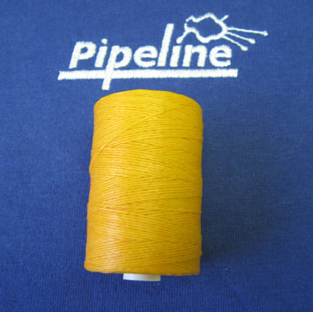
Bagpipe Unwaxed Yellow Hemp Large Roll (In Stock)
Quantity in Basket:
NonePrice:
$9.10Shipping Weight:
0.24 poundsWhat is Bagpipe Unwaxed Yellow Hemp Large Roll used for ? - Bagpipe hemp is a staple for every piper. Hemp is used on all joints of your bagpipe and practice chanter. A roll of hemp is a must in every pipe case. Having your pipes properly hemped-up is one of the most important maintenance aspects on your bagpipe. It will help with proper tuning, and air efficiency. This hemp is wax-free and will absorb moisture unless you apply bees wax.
What is hemp used for?
Hemp: is the fine twine traditionally used by pipers to attach the drones, chanter and blowpipe to the stocks with an airtight seal, and to connect the slide section of the drones with an airtight but movable fit. It is also used to secure the flapper valve to the blowpipe. If hemping is not done correctly your pipe will suffer from air loss, spinning hemp joints, unraveling hemp, and quite possibly cracked stocks.
What supplies do I need to hemp my bagpipes?
Supplies - Waxed hemp yellow or black
, and double sided sticky tape, OR; unwaxed hemp , beeswax
and cobbler's waxand a small (4" X 4") piece of leather. You may choose to use the
traditional method with unwaxed hemp, cobbler's wax and beeswax, or the
modern way, with waxed hemp, and double sided sticky tape. Both
approaches work well, if done properly.
How do I hemp my bagpipes?
If you choose the traditional
route, you must first prepare the unwaxed hemp to make it adhere to the raw wood
(using cobbler's wax) and to be moisture resistant (using beeswax). Place the
cobbler's wax in the middle of a strip of leather; then hold a match or lighter
to the wax for a short time in order to soften the wax. Unravel a two foot
length of hemp from the roll and tie one end to a door handle or place it under
your foot. Pull the length of hemp till it is taut then rub the cobbler's wax
back and forth on the hemp till it has a good coating of the cobbler's wax. Now
unravel another eight to ten feet from the roll and apply the beeswax by rubbing
it back and forth on the stretched hemp till the hemp is well coated with
beeswax. Caution on the cobbler's wax! Do not apply cobbler's wax
to more than the first two feet of hemp. If the cobbler's wax bleeds through to
the outer layer of the wrapping you can end up with joints stuck together.
Always keep the cobbler's wax in a sealed plastic bag when it is in your pipe
case, as on a warm day the cobbler's wax can melt and make a mess of anything
near it.
The next step is to fasten the hemp to the bare wood - The
cobbler's wax is used to stick the hemp to the wood, or you can wrap a layer of
double sided sticky tape around the wooden joint to be hemped. Both methods will
adhere the hemp to the wood. If you neglect this first step you will end up with
a spinning hemped joint, which is when all the hemp on a joint spins as one
solid piece and makes removal or adjustment of the part very difficult.
For the first wrap, lay a tail of the hemp across (perpendicular to) the
groves of the joint to be hemped. Place your thumb on the tail, then with
pressure, start to wind the hemp around the joint covering the tail as you go.
It is important to keep the hemp tight and in the groves of the joint, follow
the groves all the way down the joint.
After the first layer of hemp is
wrapped, retrace your way back filling in the groves made by the first layer.
Continue this process and check the fit of the joint against the part you are
mating it to. When you have a snug fit, add one last layer of hemp, but this
time as you wrap, leave a space between each wrap, like the threads on a screw.
Once a good fit has been achieved, finish the hemping by tying the end with a
half hitch. After a few days, no matter how good a job you do, the hemp will
compress and the joint will be a little loose, so repeat the final wrap to
reachieve the proper tightness.
Tightness - The hemp on the
tuning slides should be tight enough to prevent the top section from slipping,
but loose enough that you can adjust the slides with one hand. The stocks should
be airtight but care must be taken not to over-hemp them, as this will result in
cracked stocks. If you are using the pre-waxed hemps, the black-waxed hemp is
slightly thicker than the yellow-waxed hemp and works best for the first and
layering wraps. For a tighter fit, the final wrap should be done with the
yellow-waxed hemp. If you have been following along with these articles you
should now have an airtight pipe bag, stocks without leaks, a blowpipe that is
non-restrictive with a good one-way valve and properly hemped joints. You are
well on the way to effortless bagpipe playing.